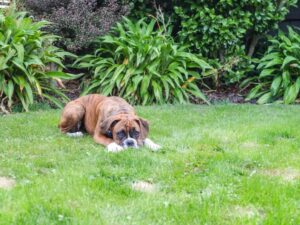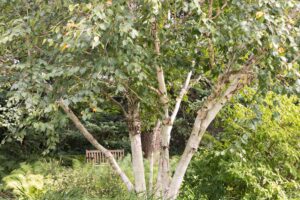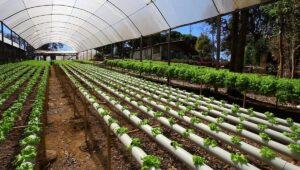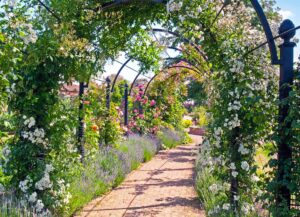What Are Granny Pods? The Complete Guide to Accessory Dwelling Units for Aging Parents
As you watch your parents age, you might be wondering how to best support them while respecting their independence. Many Americans are facing this exact dilemma, torn between providing necessary care and maintaining boundaries. This is where the concept of “granny pods” enters the conversation, offering a compelling solution that balances proximity with privacy.
Granny pods—small, self-contained living spaces built on your property—represent an innovative approach to multigenerational living that’s gaining momentum across the United States. These accessory dwelling units (ADUs) provide a way for you to keep your aging loved ones close while respecting everyone’s need for personal space and independence.
In this comprehensive guide, you’ll discover everything you need to know about granny pods, from their various designs and costs to the legal considerations and financial implications. You’ll learn how these structures compare to traditional elder care options and why many families are embracing this alternative as a compassionate, practical solution to aging in place.
Understanding Granny Pods: Definition and Evolution
What Exactly Is a Granny Pod?
A granny pod, also known as an accessory dwelling unit (ADU), in-law suite, or backyard cottage, is a small, self-contained living space built on the same property as a main residence. Specifically designed with seniors in mind, these structures typically range from 300 to 800 square feet and include essential amenities like a bedroom, bathroom, kitchen, and living area—all in a compact, efficient layout.
The term “granny pod” was popularized to describe these structures that allow elderly parents or relatives to live close to family while maintaining their independence. You might also hear these units referred to as MEDCottages (Medical Cottages), mother-in-law suites, or backyard cottages, depending on the region and specific features.
According to the U.S. Department of Housing and Urban Development (HUD), ADUs are recognized as “a cost-effective housing option that can help communities overcome housing supply shortages and increase affordability.” In fact, HUD actively encourages states and local jurisdictions to adopt policies that facilitate ADU development as part of broader housing strategies (https://www.huduser.gov/portal/publications/adu.html).
The Historical Evolution of Granny Pods
The concept of separate living quarters for extended family isn’t new. Throughout American history, multigenerational living arrangements were common, with different generations sharing homes or properties. However, the specific design and marketing of dedicated structures for aging relatives has evolved significantly in recent decades.
In the early 2000s, the MEDCottage was developed by Rev. Kenneth Dupin in Salem, Virginia, as a medically equipped dwelling unit specifically designed for elderly care. This pioneering concept helped launch the modern granny pod movement, combining accessibility features with monitoring technology in a residential setting.
Since then, the concept has expanded beyond medical-focused units to encompass a variety of designs that prioritize comfort, independence, and aging in place. The COVID-19 pandemic further accelerated interest in these structures, as families sought alternatives to nursing homes and ways to keep vulnerable elderly relatives close but protected.
Today’s granny pods represent the culmination of architectural innovation, healthcare considerations, and changing social attitudes toward elder care and multigenerational living.
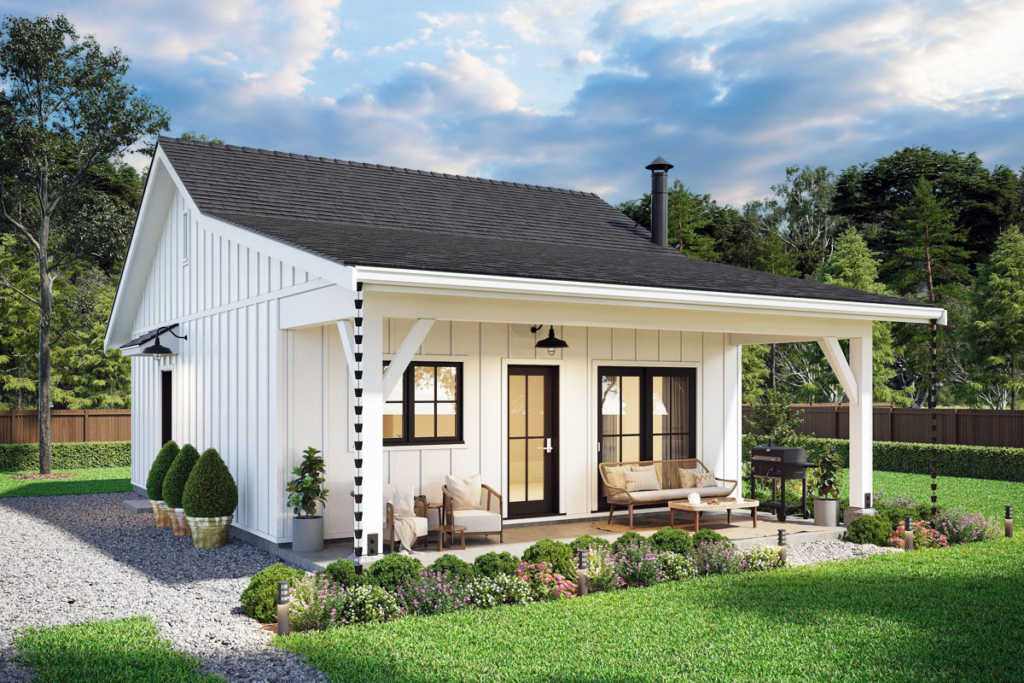
Types of Granny Pods: Options and Features
Granny pods come in various forms, each with distinct characteristics designed to meet different needs and preferences. Understanding these options can help you select the most appropriate solution for your family situation.
Prefabricated Granny Pods
Prefabricated granny pods have gained popularity due to their relative affordability and quick installation times. These units are manufactured off-site in sections, then assembled on your property, significantly reducing construction time compared to traditional building methods.
Companies like FabCab, Wheelhaus, and Method Homes specialize in creating prefabricated ADUs with senior-friendly designs. These manufacturers offer various floor plans and customization options, allowing you to select features that best accommodate your loved one’s needs.
The advantages of prefabricated units include:
- Shorter construction timelines (typically 2-4 months from order to move-in)
- Potentially lower costs due to factory efficiencies
- Consistent quality control standards
- Reduced disruption to your property during installation
Custom-Built Granny Pods
For families seeking a more personalized approach, custom-built granny pods offer maximum flexibility in design and features. Working with an architect or contractor, you can create a space specifically tailored to your loved one’s current and anticipated needs.
Custom builds allow for thoughtful integration with your existing property, potentially enhancing both homes’ value. You can precisely match architectural styles, optimize placement for views or garden access, and incorporate specialized features for aging in place.
While custom builds typically cost more and take longer to complete than prefabricated options, they provide unparalleled opportunity for personalization and may better address unique requirements or challenging site conditions.
MEDCottages: The Medical Approach
MEDCottages represent a specialized category of granny pods focused on medical monitoring and accessibility. Developed specifically for elderly care, these units incorporate various healthcare technologies and safety features.
A standard MEDCottage includes:
- Smart technology that monitors vital signs and medication schedules
- Cushioned flooring to minimize injury from falls
- Accessibility features like wider doorways and bathroom grab bars
- Circadian lighting systems that adjust automatically
- Basic security and monitoring cameras (viewable by caregivers)
These medically oriented units provide peace of mind for families caring for relatives with health concerns, creating a safer environment that still preserves dignity and independence.
Converted Spaces Within Existing Homes
Not all granny pods are standalone structures. Many families opt to convert existing spaces within their homes—such as basements, garage apartments, or first-floor master suites—into semi-independent living quarters for elderly relatives.
These conversions typically involve:
- Adding private entrances where possible
- Installing kitchenettes or full kitchens
- Creating accessible bathrooms
- Modifying doorways and transitions for wheelchair access
- Installing separate climate controls
While these conversions often cost less than building new structures, they may provide less privacy for both you and your relative. However, they offer the advantage of more immediate support in case of emergency and easier integration into daily family life.
Essential Features for Senior-Friendly Design
Regardless of which type of granny pod you choose, certain design elements are crucial for creating a safe, comfortable living environment for aging residents. These features focus on accessibility, safety, and comfort—essential considerations for aging in place.
Accessibility Features
Creating a truly accessible space involves thoughtful design choices throughout the unit:
- Zero-step entries eliminate tripping hazards and accommodate wheelchairs or walkers
- Wider doorways (minimum 36 inches) allow for wheelchair passage
- Lever-style door handles are easier to operate than knobs
- Lower light switches and raised electrical outlets reduce the need to bend
- Pull-out shelving and accessible storage minimize reaching and bending
- Curbless showers with seating options and handheld showerheads enhance bathroom safety
- Non-slip flooring throughout reduces fall risks
The Centers for Disease Control and Prevention (CDC) offers detailed guidelines for creating accessible living spaces for older adults through their Healthy Aging program (https://www.cdc.gov/healthyplaces/healthtopics/healthyaging.htm).
Smart Home Technology
Modern granny pods often incorporate smart technology to enhance safety and independence:
- Motion-activated lighting prevents falls in dark areas
- Voice-controlled systems for lights, temperature, and entertainment
- Medical alert systems with direct connections to caregivers or emergency services
- Automated medication dispensers with reminders
- Remote monitoring capabilities for family members
- Smart thermostats that maintain comfortable temperatures
- Video doorbells for security and visitor screening
These technological features can extend the period of independent living and provide reassurance to family members concerned about safety.
Energy Efficiency Considerations
Energy efficiency is particularly important for fixed-income seniors sensitive to utility costs:
- Enhanced insulation to maintain comfortable temperatures
- Energy-efficient windows and doors
- LED lighting throughout
- Energy Star-rated appliances
- Efficient heating and cooling systems with simple controls
- Solar panels (in some cases) to reduce electricity costs
- Smart power strips to eliminate phantom energy use
These features not only reduce ongoing costs but also contribute to a more comfortable living environment by eliminating drafts and maintaining consistent temperatures.
Cost Analysis: Investment and Considerations
Understanding the financial implications of installing a granny pod is essential for family planning. Costs vary widely based on type, size, features, and location, but this breakdown will help you develop realistic expectations.

Initial Construction and Installation Costs
The following table provides a general overview of costs associated with different granny pod options:
| Type of Granny Pod | Average Cost Range | Typical Size Range | Average Cost Per Square Foot |
|---|---|---|---|
| Prefabricated Units | $40,000 – $125,000 | 300 – 600 sq ft | $150 – $250 |
| Custom-Built ADUs | $100,000 – $300,000 | 400 – 800 sq ft | $250 – $400 |
| MEDCottages | $85,000 – $125,000 | 300 – 500 sq ft | $250 – $300 |
| Home Conversions | $20,000 – $80,000 | Varies | $100 – $200 |
Beyond the basic structure, additional costs may include:
- Site preparation and foundation: $4,000 – $12,000
- Utility connections (water, sewer, electric): $5,000 – $15,000
- Permits and inspection fees: $1,500 – $7,000 (varies significantly by location)
- Accessibility modifications: $5,000 – $20,000
- Smart home technology: $2,000 – $10,000
- Landscaping and exterior work: $2,000 – $8,000
These figures represent national averages and can vary substantially based on local construction costs, material choices, site conditions, and municipal requirements.
Long-term Financial Considerations
When evaluating the economics of a granny pod, it’s important to consider long-term financial implications:
Compared to Assisted Living Facilities
According to the National Center for Assisted Living, the average monthly cost of assisted living in the United States was approximately $4,500 in 2023, with significant regional variations. Higher levels of care or memory care units typically cost substantially more.
| Care Option | Average Monthly Cost | Average Annual Cost | 5-Year Cost |
|---|---|---|---|
| Assisted Living Facility | $4,500 | $54,000 | $270,000 |
| Nursing Home (Private Room) | $9,034 | $108,408 | $542,040 |
| Granny Pod (amortized over 5 years)* | $1,500 – $3,000 | $18,000 – $36,000 | $90,000 – $180,000 |
*Assumes $90,000-$180,000 initial investment amortized over 5 years, plus maintenance and utilities.
This comparison illustrates that while the upfront investment in a granny pod is substantial, it can be more economical than long-term care facilities over time, particularly if occupancy extends beyond a few years.
Property Value Implications
Research from the Appraisal Institute suggests that well-designed ADUs can increase property values by 20-30%, though actual appreciation varies based on local market conditions and the quality of the installation. In high-cost housing markets like California, Oregon, and Washington, where ADU policies have been liberalized, the value-add tends to be on the higher end of this range.
However, it’s important to note that poorly planned or constructed units may not add equivalent value, and in some communities with restrictive zoning or negative perceptions of ADUs, the impact on property value could be neutral or even negative.
Financing Options for Granny Pods
Several financing pathways exist for families considering granny pod installations:
- Home equity loans or lines of credit: Using your home’s equity can provide relatively low-interest financing
- Construction loans: Specifically designed for building projects, these convert to permanent mortgages upon completion
- Refinancing: Cash-out refinancing of your primary residence can fund ADU construction
- Renovation loans: FHA 203(k) loans and Fannie Mae HomeStyle Renovation loans include ADU construction as eligible projects
- Personal loans: For smaller projects or conversions, personal loans might be appropriate
- Family financing agreements: Some families create formal arrangements where multiple family members contribute to costs
The U.S. Department of Housing and Urban Development (HUD) offers resources on home improvement financing options that may apply to ADU construction through their website (https://www.hud.gov/topics/home_improvements).
Legal and Zoning Considerations
Before proceeding with a granny pod installation, understanding the legal landscape is crucial. Regulations vary significantly across states, counties, and municipalities, creating a complex patchwork of requirements.
Zoning Regulations Across the United States
Zoning regulations determine whether you can legally build an ADU on your property. These regulations vary widely:
| Region | General ADU Stance | Notable States/Cities | Recent Policy Changes |
|---|---|---|---|
| West Coast | Broadly supportive | CA, OR, WA | California passed multiple laws mandating ADU approval statewide |
| Northeast | Mixed, urban areas more supportive | NY, MA, VT | Boston and Cambridge adopted ADU-friendly ordinances in recent years |
| Midwest | Generally restrictive with exceptions | MN, IL | Minneapolis eliminated single-family zoning, allowing ADUs citywide |
| South | Mostly restrictive with growing exceptions | TX, NC, FL | Austin and Raleigh have liberalized ADU regulations |
States like California have enacted sweeping reforms that override local restrictions, effectively legalizing ADUs on most single-family lots. In contrast, many municipalities in other regions still maintain restrictions on secondary dwellings.
Common zoning requirements include:
- Minimum lot size requirements
- Maximum ADU square footage (often a percentage of the main dwelling)
- Setback requirements from property lines
- Height restrictions
- Owner-occupancy requirements (requiring the property owner to live in either the main house or the ADU)
- Design standards for architectural compatibility
- Parking requirements for the additional dwelling
Permitting Process and Building Codes
Once you’ve determined that zoning allows for an ADU, you’ll need to navigate the permitting process, which typically involves:
- Preliminary review/consultation with local planning department
- Submission of detailed architectural plans
- Plan review for zoning compliance
- Plan review for building code compliance
- Issuance of building permits
- Scheduled inspections throughout construction
- Final inspection and certificate of occupancy
Building codes typically address:
- Structural requirements
- Minimum ceiling heights
- Window sizes for egress
- Insulation and energy efficiency standards
- Electrical requirements including smoke and carbon monoxide detectors
- Plumbing requirements
- Heating and cooling standards
The American Planning Association offers resources on navigating local planning processes that can be helpful for homeowners investigating ADU regulations (https://www.planning.org/knowledgebase/accessorydwellings/).
Legal Agreements and Considerations
Beyond zoning and building requirements, several legal considerations deserve attention:
- Family agreements: Documenting expectations about care, costs, and eventual ownership
- Estate planning: Addressing how the ADU will be handled in inheritance situations
- Rental agreements: Even with family, written agreements can prevent misunderstandings
- Property tax implications: ADUs may increase property tax assessments
- Insurance requirements: Additional structures may require policy adjustments
- Healthcare proxies and power of attorney: These become increasingly important in care situations
Consulting with an elder law attorney can help navigate these complex legal considerations. The National Academy of Elder Law Attorneys provides a directory of specialized attorneys (https://www.naela.org/).
Comparing Granny Pods to Other Elder Care Options
To make an informed decision about whether a granny pod is the right solution for your family, it’s helpful to compare this option with other common approaches to elder care.
Aging in Place in Original Home
Many seniors express a strong preference for remaining in their longtime homes. This option preserves familiarity and independence but presents several challenges:
Advantages:
- Maintains established community connections and routines
- No moving costs or adjustment to new surroundings
- Preserves memories and emotional attachments
- No construction or major renovation expenses
Challenges:
- Original homes often have accessibility issues (stairs, narrow doorways)
- Maintenance becomes increasingly burdensome
- Isolation risk increases, especially after driving cessation
- Emergency response may be delayed without nearby assistance
- Modifications may be costly and disruptive
The National Institute on Aging provides resources for adapting homes for aging in place (https://www.nia.nih.gov/health/aging-place-growing-old-home).
Multigenerational Living (Same Household)
Having elderly parents move directly into your home represents the most integrated approach to family caregiving:
Advantages:
- Maximizes supervision and immediate care access
- Reduces overall housing costs by sharing one residence
- Strengthens intergenerational bonds
- Simplifies meal preparation and daily assistance
- No construction costs (unless renovations are needed)
Challenges:
- Limited privacy for all generations
- Potential for increased family tension
- Caregiving responsibilities can become all-consuming
- Home may still require significant modifications
- Less independence for seniors
Assisted Living and Nursing Facilities
Professional care facilities offer structured environments with varying levels of assistance:
Advantages:
- Professional care staff available 24/7
- Social activities and peer interaction
- Specialized memory care options available
- No home modification or construction required
- Reduced direct caregiving burden on family
Challenges:
- Significant ongoing costs
- Limited personalization of living environment
- Institutional setting can feel impersonal
- Potential quality of care concerns
- Distance may reduce family interaction
Comparative Analysis of Options
The following table compares key factors across different elder care approaches:
| Factor | Granny Pod | Aging in Original Home | Multigenerational Household | Assisted Living |
|---|---|---|---|---|
| Initial Cost | High ($40k-$300k) | Low to Moderate (modifications only) | Low to Moderate (modifications only) | Low (often just moving expenses) |
| Ongoing Monthly Cost | Low ($200-500) | Moderate (maintenance, utilities) | Shared household expenses | High ($4,000-9,000) |
| Independence Level | High | Very High | Moderate | Low to Moderate |
| Care Accessibility | High | Low | Very High | High |
| Privacy | High | Very High | Low | Moderate |
| Family Integration | High | Moderate | Very High | Low |
| Resale Value Recovery | Moderate to High | N/A | N/A | None |
This comparison illustrates that granny pods occupy a middle ground in many categories, offering a balance of independence and support that other options may lack. The high initial investment is offset by lower ongoing costs and potential property value increases.
The Impact on Family Dynamics and Caregiving
The decision to install a granny pod affects not just the elderly relative who will occupy it, but the entire family system. Understanding these dynamics is essential for successful implementation.
Benefits for Intergenerational Relationships
Properly implemented granny pod arrangements can strengthen family bonds across generations:
For grandchildren and younger family members, having grandparents nearby offers:
- Regular interaction and relationship building
- Opportunity to learn family history and traditions
- Development of empathy and respect for elders
- Practical support (like after-school supervision)
- Modeling of family caregiving values
For adult children, the arrangement provides:
- Peace of mind from proximity without constant togetherness
- Ability to provide care while maintaining boundaries
- Reduced travel time for checking in and assistance
- Shared memories and extended time together
- Gradual adjustment to increasing care needs
For elderly parents, benefits include:
- Maintained dignity and independence
- Family connection without dependency
- Security of nearby assistance
- Involvement in family life on their terms
- Reduced isolation and loneliness
Research from the Stanford Center on Longevity suggests that meaningful intergenerational connections contribute significantly to well-being for both seniors and younger family members, with physical and mental health benefits for all involved.
Caregiver Burnout and Setting Boundaries
While proximity can facilitate caregiving, it’s essential to establish clear boundaries to prevent caregiver burnout:
- Establish explicit expectations about daily check-ins versus privacy time
- Create written schedules for assistance with specific tasks
- Discuss and document emergency protocols
- Consider supplementary professional services for medical or personal care
- Plan for caregiver respite and backup support
- Maintain separate social lives and activities
- Respect the elder’s autonomy in decision-making
The National Alliance for Caregiving offers resources for family caregivers, including strategies for preventing burnout and setting healthy boundaries (https://www.caregiving.org/).
Communication Strategies for Successful Transitions
Open, thoughtful communication is the foundation for successful implementation of granny pod arrangements:
Before construction:
- Discuss honest expectations from all perspectives
- Address financial responsibilities clearly
- Consider trial arrangements before permanent commitment
- Explore “what if” scenarios for health changes
- Consult with elder law professionals about agreements
During transition:
- Create gradual moving timelines
- Involve your relative in design and furnishing decisions
- Establish communication routines and check-in protocols
- Document medication schedules and care needs
- Orient to emergency systems and technology
Ongoing maintenance:
- Schedule regular family meetings to address changing needs
- Revisit and adjust boundaries as needed
- Celebrate successes and address challenges promptly
- Include the elder in family decision-making
- Periodically review legal and financial arrangements
The Family Caregiver Alliance provides excellent resources for navigating family care conversations (https://www.caregiver.org/).
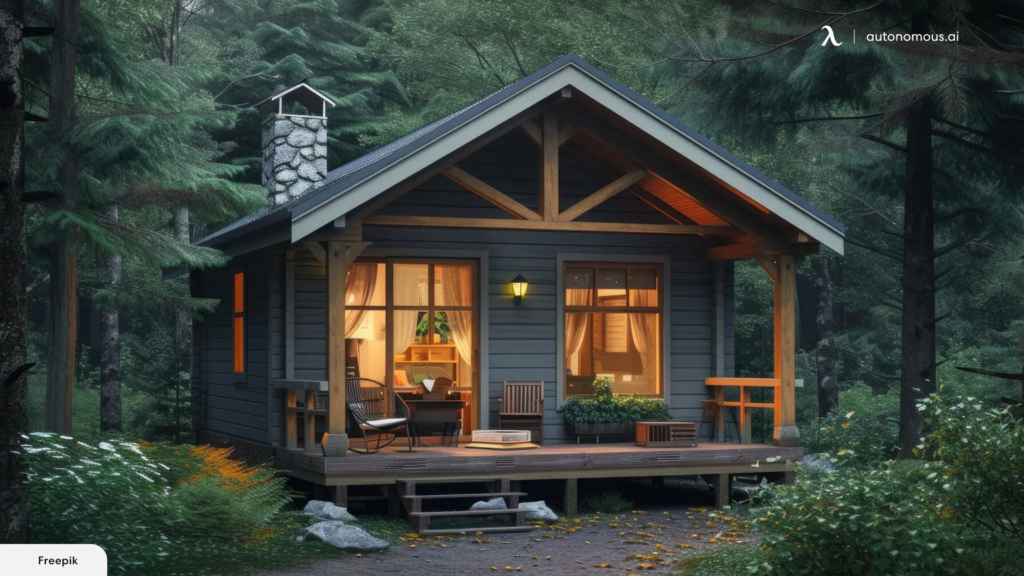
Government Programs and Financial Assistance
Various government programs can provide financial support or resources for families considering granny pods, though specific assistance for ADU construction is still limited.
Medicare and Medicaid Considerations
While Medicare generally doesn’t cover housing modifications or construction, some aspects of granny pod implementation may qualify for assistance:
- Medicare Part B may cover certain durable medical equipment (grab bars, shower chairs)
- Some Medicare Advantage plans offer expanded benefits for aging in place
- Medicaid Home and Community-Based Services (HCBS) waivers in some states can fund home modifications that support independence
The Centers for Medicare & Medicaid Services provides detailed information about coverage options (https://www.cms.gov/).
Veterans Affairs Programs
Veterans and their spouses may access several relevant programs:
- VA Home Loans can sometimes be used for property improvements, including ADUs
- The Home Improvements and Structural Alterations (HISA) grant provides up to $6,800 for service-connected conditions
- Specially Adapted Housing (SAH) grants offer substantial funding for veterans with service-connected disabilities
- Aid and Attendance benefits can help cover caregiving costs
The U.S. Department of Veterans Affairs offers detailed eligibility information for these programs (https://www.va.gov/housing-assistance/).
State and Local Initiatives
Some state and local governments have created initiatives specifically supporting ADU development:
- Property tax exemptions or abatements for senior housing modifications
- Expedited permitting processes for accessible ADUs
- Reduced impact fees for units designated for elderly relatives
- Low-interest loan programs for accessory dwelling units
- Grants for accessibility modifications
These programs vary significantly by location. Your local Area Agency on Aging can provide information about available programs in your region (https://eldercare.acl.gov/).
Future Trends and Innovations in Granny Pods
The granny pod concept continues to evolve, influenced by demographic shifts, technological advances, and changing attitudes toward aging and housing.
Demographic Trends Driving Increased Adoption
Several demographic factors suggest continued growth in the granny pod market:
- The U.S. Census Bureau projects that by 2034, older adults will outnumber children for the first time in U.S. history
- The “sandwich generation” caring for both children and parents is growing
- Housing affordability challenges increase the appeal of shared property solutions
- Healthcare worker shortages make family-based care more necessary
- Post-pandemic caution about congregate living environments persists
These trends collectively point toward continued expansion of the granny pod concept as families seek alternatives to traditional elder care arrangements.
Technological Advances Enhancing Independent Living
Emerging technologies are making granny pods increasingly sophisticated:
- Artificial intelligence monitoring systems that learn patterns and detect anomalies
- Telehealth integration with built-in clinical consultation spaces
- Advanced fall detection beyond traditional alert buttons
- Robotic assistance for tasks like medication dispensing
- Smart home systems with intuitive interfaces designed for seniors
- Virtual reality for cognitive stimulation and social connection
- 3D-printed components reducing construction costs and time
These technologies aim to extend independence while providing safety nets that reassure both seniors and their families.
Sustainable and Adaptable Design Innovations
The next generation of granny pods emphasizes sustainability and adaptability:
- Modular designs that can be reconfigured as needs change
- Net-zero energy performance through advanced insulation and solar integration
- Water conservation systems including rainwater harvesting
- Biophilic design principles that connect occupants with nature
- Materials selected for low environmental impact and healthy indoor air quality
- Universal design features that accommodate changing abilities
- Designs that facilitate eventual repurposing for other uses
Organizations like the National Institute of Building Sciences are developing standards for sustainable, adaptable housing that will influence future granny pod designs (https://www.nibs.org/).
Case Studies: Real Families, Real Solutions
Examining how actual families have implemented granny pod solutions provides valuable insights into the practical realities of these arrangements.
The Johnson Family: Prefabricated Solution in Seattle
When Robert Johnson’s mother began struggling with the stairs in her two-story home after knee replacement surgery, the family explored various options. With a spacious backyard in their Seattle home, the Johnsons decided on a 400-square-foot prefabricated unit from a local manufacturer.
Key aspects of their experience included:
- Taking advantage of Seattle’s ADU-friendly zoning reforms
- Selecting a unit with accessibility features but without an institutional feel
- Financing through a home equity line of credit
- Completing installation in just under four months
- Creating written agreements about privacy and assistance expectations
- Installing a garden path connecting the homes that accommodated a wheelchair
- Implementing a video chat system for daily check-ins
Three years later, Robert reports that the arrangement has worked well: “Mom maintains her independence but knows help is just across the yard. The grandkids visit her daily, and she’s part of our lives in a way that wouldn’t be possible if she were in a facility.”
The Rodriguez Family: Converted Garage in Los Angeles
The Rodriguez family took a different approach when Maria’s father needed to move closer after developing early-stage Parkinson’s disease. With limited yard space but a detached two-car garage, they decided on a conversion project.
Their process involved:
- Working with an architect specializing in accessible design
- Navigating Los Angeles’ ADU permitting process
- Installing a kitchenette, bathroom, and sleeping area in the 480-square-foot space
- Creating separate utility connections for independence
- Incorporating subtle grab bars and stability features
- Installing smart lighting with motion sensors
- Maintaining the exterior garage appearance to blend with the neighborhood
Maria notes that the proximity has allowed for incremental caregiving: “We can adjust our involvement as Dad’s condition changes. Right now, he’s quite independent, but we can easily provide more support when needed without dramatically changing our living arrangement.”
The Mitchell Family: MEDCottage in Rural Virginia
When Elizabeth Mitchell’s mother was diagnosed with Alzheimer’s, the family wanted an arrangement that provided both freedom and supervision. They opted for a MEDCottage placed on their five-acre property in rural Virginia.
Their implementation included:
- Selecting a medically-equipped unit with monitoring technology
- Placing the cottage within view of the main house’s kitchen window
- Working with their mother’s neurologist to optimize the environment
- Installing simplified controls and memory cues throughout
- Creating circular pathways for safe wandering within the cottage
- Implementing a flexible caregiving schedule among family members
- Supplementing family care with visiting professionals
Elizabeth shares: “The cottage has allowed Mom to maintain dignity while giving us peace of mind. The monitoring features alert us to potential problems without us having to be physically present every moment.”
These case studies illustrate the versatility of the granny pod concept and how it can be adapted to different family situations, regional contexts, and health conditions.
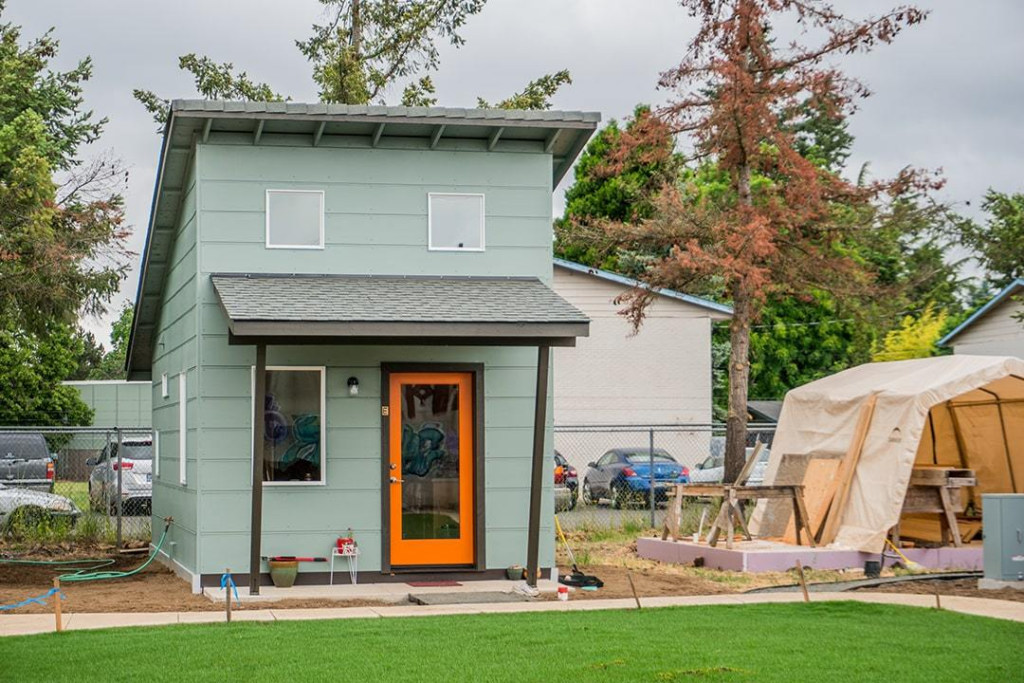
Making the Decision: Is a Granny Pod Right for Your Family?
As you consider whether a granny pod might be the right solution for your family, several key factors deserve careful consideration.
Assessment Questions for Families to Consider
Before proceeding with a granny pod investment, ask yourselves these essential questions:
Property Considerations:
- Does your property have sufficient space for an ADU?
- Does local zoning permit accessory dwelling units?
- Is the terrain suitable, or would extensive site preparation be required?
- Are utility connections readily accessible?
- How would the unit impact outdoor living spaces and landscaping?
Financial Considerations:
- Can you comfortably afford the upfront investment?
- How does the long-term cost compare to alternatives for your situation?
- What financing options are available to you?
- Have you budgeted for ongoing maintenance and eventual modifications?
- Have you considered impact on property taxes and insurance?
Caregiving Considerations:
- What level of assistance does your loved one currently need?
- How might those needs evolve over time?
- Can your family realistically provide the necessary support?
- What professional services might supplement family care?
- Have you discussed expectations clearly with all involved parties?
Relationship Considerations:
- How will proximity affect existing family dynamics?
- Are boundaries and privacy expectations clearly established?
- Have you considered the impact on your marriage/partnerships?
- How will the arrangement affect relationships with other family members?
- What mechanisms exist for resolving conflicts that may arise?
Consulting with Professionals
Making an informed decision typically requires input from several professionals:
- Elder law attorney: To address legal agreements, estate planning, and care contracts
- Financial advisor: To evaluate investment aspects and long-term financial implications
- Architect or builder: To assess feasibility and provide cost estimates
- Geriatric care manager: To evaluate care needs and appropriate housing features
- Local planning department: To clarify zoning requirements and restrictions
The National Association of Area Agencies on Aging can connect you with local resources and professionals experienced in elder care housing options (https://www.n4a.org/).
Timeline and Planning Considerations
Implementing a granny pod solution typically requires significant lead time:
6-12 months before need:
- Research zoning and permitting requirements
- Consult with elder law attorney
- Begin financial planning and exploring financing options
- Research builders or prefabricated options
- Discuss concept with all family members
3-6 months before need:
- Finalize plans and submit permit applications
- Secure financing
- Schedule site preparation and construction
- Begin conversations about household merging and logistics
- Consider temporary arrangements if needed during construction
1-3 months before move-in:
- Complete construction and inspections
- Set up utilities and services
- Purchase furniture and accessories
- Install any needed technology or medical equipment
- Create written agreements and expectations
This timeline can be compressed in emergency situations, but rushing the process may lead to suboptimal decisions or implementation challenges.
Conclusion: Balancing Independence with Family Connection
As the American population ages and families seek alternatives to traditional elder care models, granny pods represent an innovative approach that balances independence with proximity. These structures offer a middle path between institutional care and complete integration into the family home—preserving privacy and autonomy while providing accessibility to support and community.
While not without challenges, from regulatory hurdles to significant upfront costs, granny pods offer compelling advantages for many families. They provide opportunities for meaningful intergenerational connections while respecting the dignity and independence that many seniors cherish.
The decision to pursue a granny pod solution is deeply personal, requiring careful consideration of practical, financial, and emotional factors. For families with suitable properties, financial resources, and commitment to supporting aging in place, these structures can provide a compassionate, practical housing solution that honors both independence and family connection.
As you navigate this decision-making process, remember that the goal is finding the arrangement that best supports your loved one’s wellbeing while respecting the needs and limitations of all family members involved. With thoughtful planning and clear communication, a granny pod might just provide the balanced solution your family seeks.
Additional Resources
For further exploration of granny pod options and related considerations, these resources provide valuable information:
Government Resources:
- Department of Housing and Urban Development: https://www.hud.gov/
- National Institute on Aging: https://www.nia.nih.gov/
- Centers for Medicare & Medicaid Services: https://www.cms.gov/
- U.S. Department of Veterans Affairs: https://www.va.gov/
Professional Organizations:
- American Association of Retired Persons (AARP): https://www.aarp.org/
- National Association of Home Builders: https://www.nahb.org/
- National Aging in Place Council: https://www.ageinplace.org/
- National Academy of Elder Law Attorneys: https://www.naela.org/
Books and Publications:
- “In-Laws, Outlaws, and Granny Flats: Your Guide to Turning One House into Two Homes” by Michael Litchfield
- “The Accessible Home: Designing for All Ages and Abilities” by Deborah Pierce
- “Age in Place: A Guide to Modifying, Organizing, and Decorating Your Home” by Lynda Shrager
- “How to Care for Aging Parents” by Virginia Morris
With these resources and the information provided throughout this guide, you’re well-equipped to evaluate whether a granny pod might be the right solution for your family’s unique circumstances.
